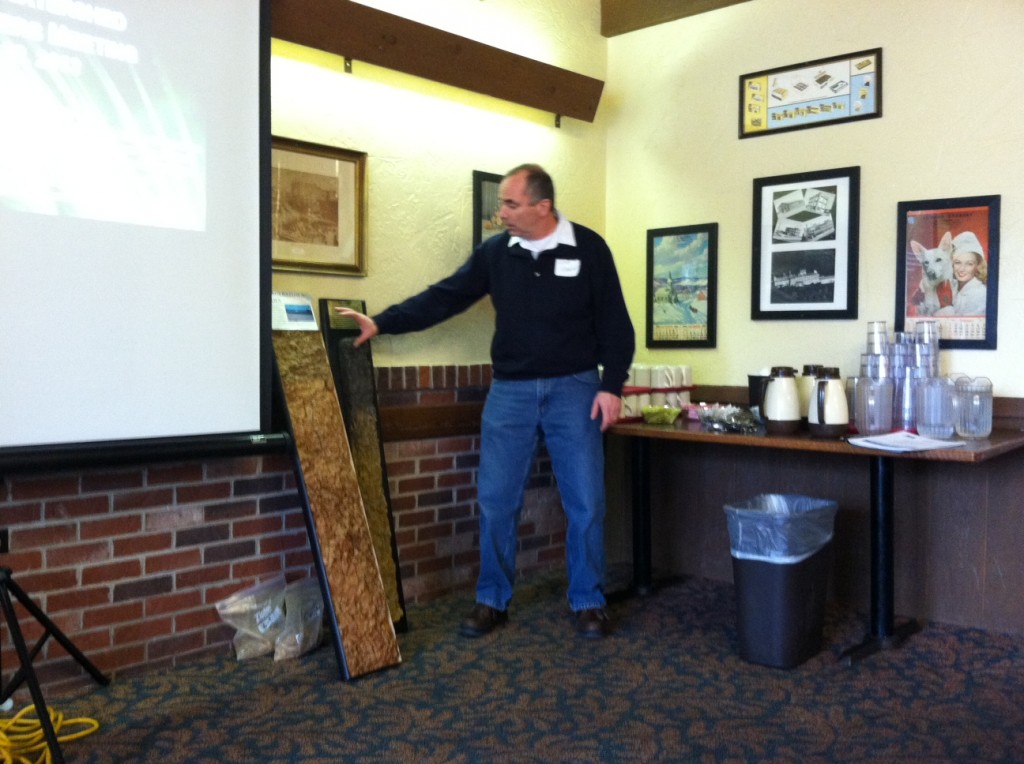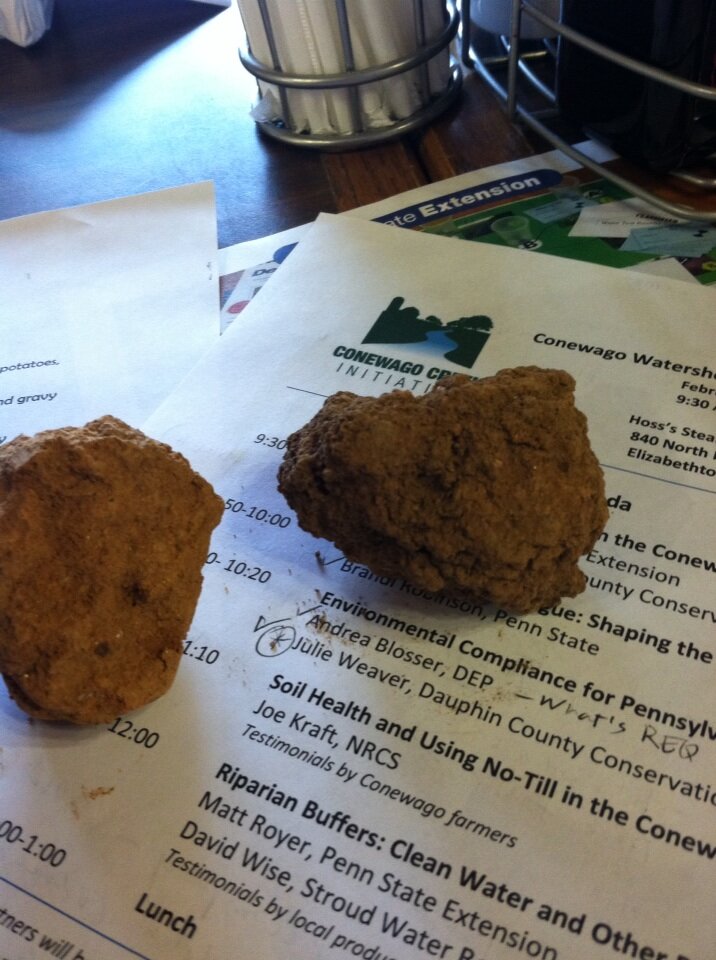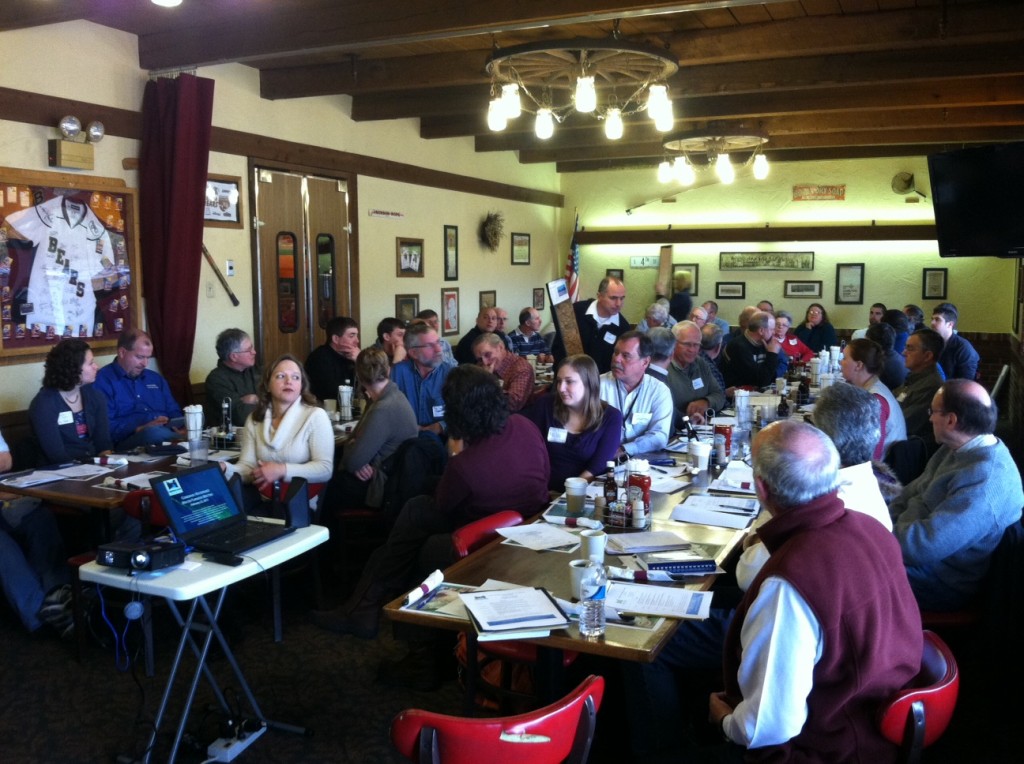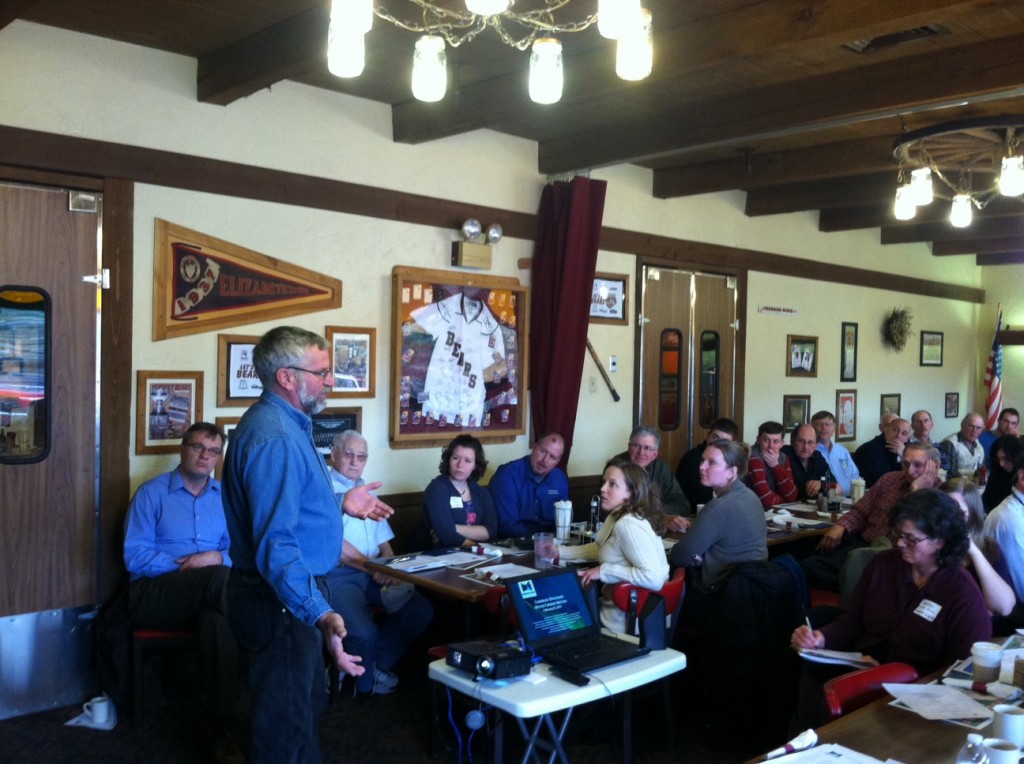The Conewago Initiative thanks all the producers and partners who attended this year’s Winter Farmers Meeting. There was a great turnout and everyone had a great time. See you next year!
Update on the Conewago Initiative
- Landowner Survey Summary
When the Initiative was first formed, a survey was sent out to residents of the watershed. This document is a summary report of the results of this survey.
A Conservation Dialogue: Shaping the Next Farm Bill
- Conservation Dialogue Factsheet
Click on this link to learn more about how producers can have a voice in crafting the next Farm Bill. Lawmakers need to be told what works and what doesn’t in terms of conservation programs directly from farmers. Until a Farm Bill is passed, your opinion can still make a difference. This link (https://www.surveymonkey.com/s/F9YFCS3) is for a survey where you can give your opinions on conservation practices and Penn State will pass them onto the appropriate people.
Environmental Compliance for Pennsylvania Farms
- Ag E&S Manure Brochure
This brochure explains the Pennsylvania agricultural environmental requirements for Pennsylvania producers. The regulations discussed in this brochure are for Erosion and Sedimentation, and Manure Management. Contact your County Conservation District for more information or for help on acheiving environmental compliance on your farm.
Soil Health and Using No-Till in the Conewago Watershed
Joe Kraft, NRCS State Soil Scientist, explaining the difference in the soil health of a no-tilled field and a traditionally plowed field. The soil panel on the left in this picture is of a plowed field and the panel on the right is of a pasture. Notice the difference in color. The darker color of the panel on the right is caused by a higher percentage of organic material. Soil samples were passed around so attendees could feel and see the difference in no-till soil vs. tilled soil. The soil on the right is the no-tilled soil. It is darker meaning it has more organic material, is more porous from worm and root action, and much lighter in weight.
Soil samples were passed around so attendees could feel and see the difference in no-till soil vs. tilled soil. The soil on the right is the no-tilled soil. It is darker meaning it has more organic material, is more porous from worm and root action, and much lighter in weight. 
The attendees of the meeting getting up up close look at the soil panels. Conewago producer, Ronn Kopp, sharing his experience using no-till and explainging the benefits he has noticed on his farm. The greatest benefit: the time and money savings generated from fewer trips across the field. Dave Coble, another Conewago producer, also gave his thoughts on no-till. His crops have deeper root systems and the soil has a greater weight bearig capacity now that he uses no-till.
Conewago producer, Ronn Kopp, sharing his experience using no-till and explainging the benefits he has noticed on his farm. The greatest benefit: the time and money savings generated from fewer trips across the field. Dave Coble, another Conewago producer, also gave his thoughts on no-till. His crops have deeper root systems and the soil has a greater weight bearig capacity now that he uses no-till.
Riparian Buffers: Clean Water and Other Benefits
- Riparian Buffers in Pictures
This is the presentation that was given by Matt Royer, Penn State Extension, showing primarily before and after pictures of riparian buffers that have been planted in the Conewago Watershed. For more information on riparian buffers: https://www.conewagoinitiative.net/?page_id=582 - Streamside Forest Buffers Preserving Water Quality
Studies by internationally acclaimed Stroud Water Research Center have shown that healthy forests bordering streams not only prevent numerous pollutants from reaching the water, but also multiply the stream’s natural ability to cleanse itself of pollutants that do make their way into the water. On a small farm that is typical of many in the Chesapeake Bay watershed, best management practices including contour farming, terraces, and grass waterways work in tandem with a swale and forested buffer to protect the stream–and therefore, the Chesapeake Bay.“The science is now clear,” says Bernard Sweeney, PhD, Director of the Stroud Water Research Center, “that widespread implementation of streamside forest buffers is one of the simplest, most cost effective approaches to eliminating many of the problems of the Chesapeake Bay…”
